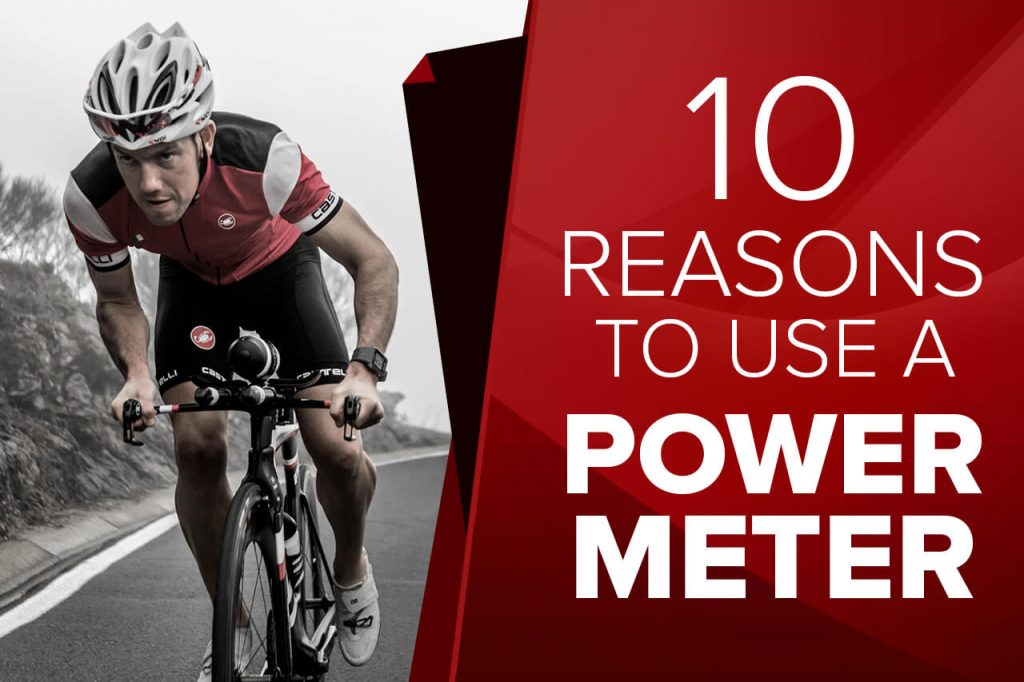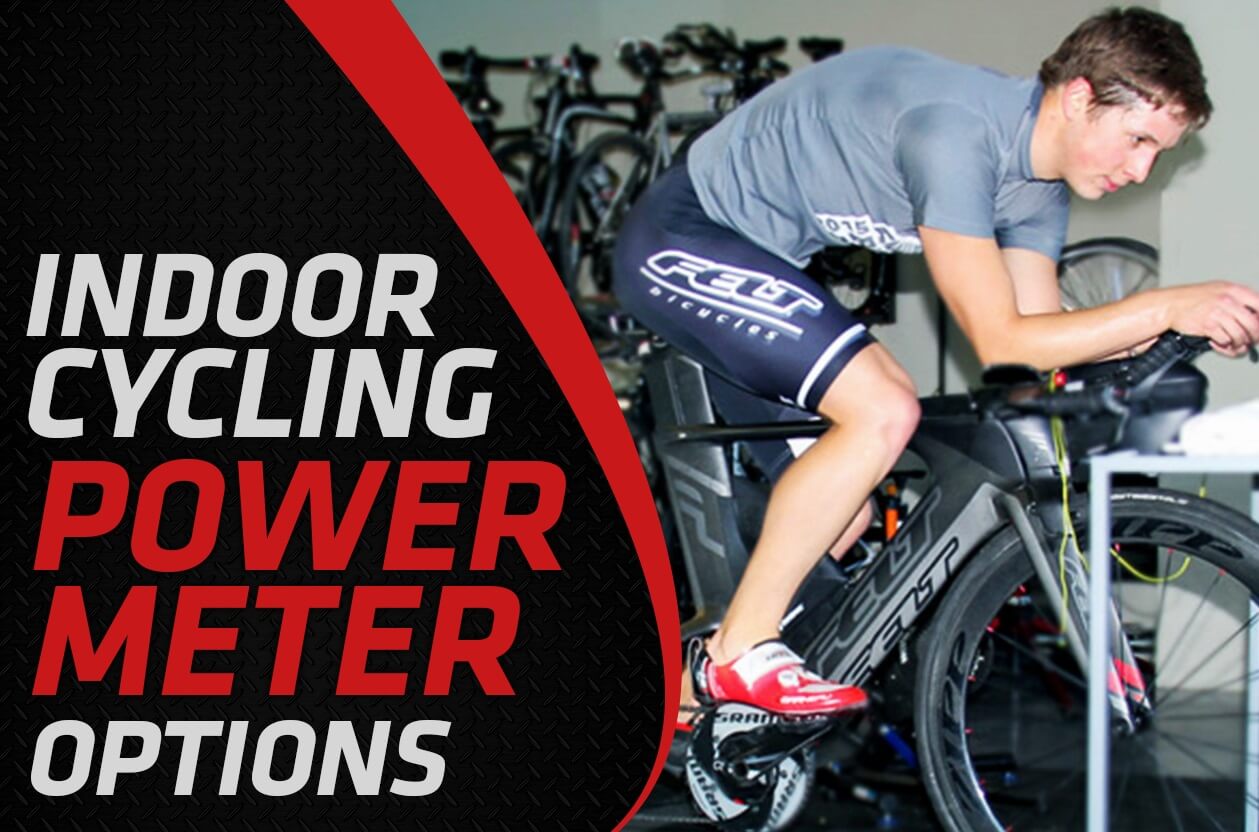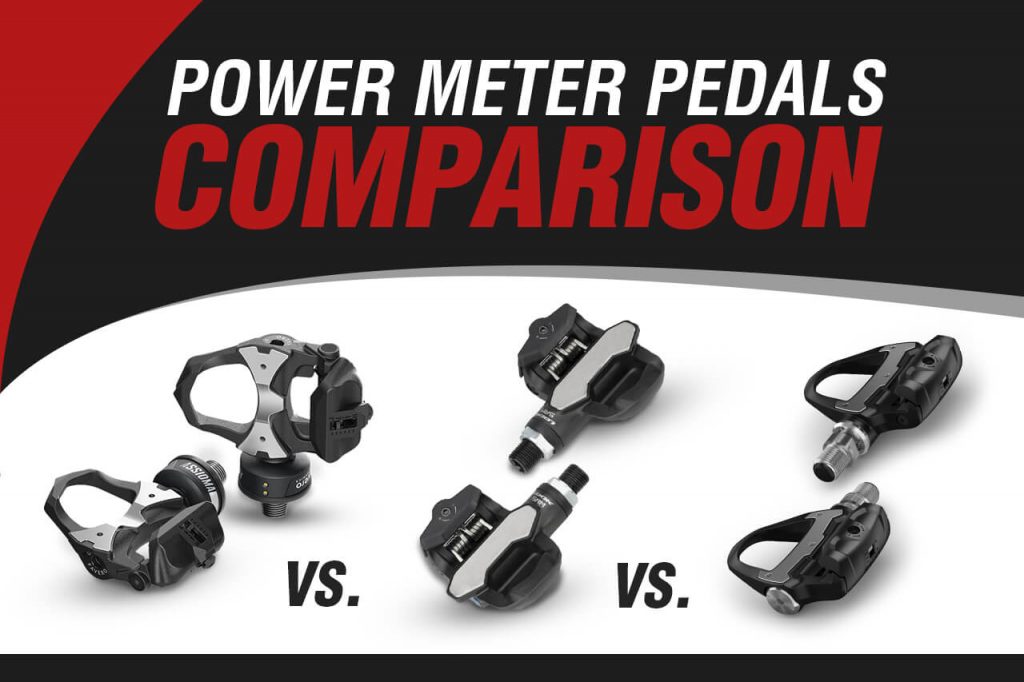Power meters allow you to see and record exactly how much power you expend on the bike – and power is simply fundamental to cycling performance. The ability to see and record your power allows for unprecedented insight into your fitness. When used properly, power meters help you become faster and stronger as they eliminate the guesswork in your training, can be used as a vital tool on race day, can serve as a motivational aid during hard training sessions and can help you know when it’s time to recover. And those are just a few reasons to use a power meter!

In addition, the notion that “only pros use power meters” is not correct. Of course professionals take advantage of the numerous benefits afforded from using a power meter. However power meters are useful for anyone who is looking to take their riding and fitness to the next level. Since a power meter enables you to precisely measure your effort, it leads to better training sessions and improved fitness, regardless of who’s using it. Joe Friel, elite triathlon and cycling coach and author of numerous cycling books including The Cyclist’s Training Bible, calls the power meter the most effective tool for increasing speed on the bike. He highly recommends that any cyclist who is looking to improve, use a power meter.
Here are our 10 Reasons to Use a Power Meter:
1. Eliminates Guesswork
Perhaps the biggest advantage to using a power meter is that it removes the guesswork that goes into training and racing. Without a power meter, you’re really just guessing how hard you should be riding, if your fitness is improving, or if you had a good day on the bike. However, a power meter allows you to quantify exactly how hard you are working (as your effort is directly measured in watts). So you have answers to all of these questions and more!
Many cyclists use a heart rate monitor in their training. Heart rate monitors are great, however they only tell you how hard the effort is to your body. They don’t tell you the actual amount of work you are performing. Watts are a much more accurate way to measure your effort. In addition, heart rate only training suffers from a number of shortcomings. Heart rates can vary day-to-day, they can ramp up slowly at the start of an interval and they can suffer from what is called cardiovascular drift (see Heart Rate vs. Power Meter for more detail).
With a power meter however, there is no guesswork. You can hit your exact intensity target at all times. This means no wasted time, precise intensity and better training.
2. Allows for Structured Training
When you just start out, you can improve your performance by following the ‘just ride lots’ technique. But soon, you will start to see your improvement slow. A structured training program where you focus on different intensities at varying durations is the ticket to continued improvements in power and performance. After you use your power meter to determine your functional threshold power, you can build a structured training plan with power-based training zones. This will allow you to precisely target the relevant zone and energy system – which leads to maximum performance gains.
| Level | Average Power | HR | PE* |
| Active Recovery | <55% | <68% | <2 |
| Endurance | 56-75% | 69-83% | 2-3 |
| Tempo | 76-90% | 84-94% | 3-4 |
| Lactate Threshold | 91-105% | 95-105% | 4-5 |
| VO2 Max | 106-120% | >106% | 6-7 |
| Anaerobic Capacity | >121% | NA | >7 |
| Neuromuscular Power | NA | NA | Max. |
*PE stands for Perceived Exertion. PE is simply a way of measuring your riding intensity (how hard it feels like your body is working).
3. Determine Strengths and Weaknesses
Depending on what type of riding and racing you do, you will want to focus on different areas of your power curve. For example, a sprinter cares most about peak power over short periods of time. This might be 30 or 60 second power. An endurance rider will care more about 60 or 90-minute power. A power meter allows to you accurately assess your strengths and weaknesses in relation to your specific discipline. Then, using your training zones, you can look to maintain your strengths while improving any weaknesses.
4. Make the Most of Limited Training Time
Athletes with limited time to train (aka “time crunched”) can especially benefit from using a power meter. Power meters help make the most of your training time by improving the quality of your training sessions. They also help remove what is called ‘junk’ training (unstructured training that doesn’t really accomplish a goal). For example, a cyclist with just 45 minutes to train on a given day can hop on their trainer or head outside and knock out 2, 20-minute intervals at a prescribed power and know they just maximized their limited training time. That’s not so easy to do without a power meter.
5. Track Fitness More Accurately
Power meters provide highly accurate details about how your fitness is changing throughout the season. You can track your average power numbers at given distances, your maximum power numbers, functional threshold power and much more. In addition, using software like TrainingPeaks and their Performance Management Chart, you can track of variety of important metrics such as your Training Stress Score (TSS), Acute Training Load (ATL), Chronic Training Load (CTL) and Training Stress Balance (TSB). The information gained from this type of software and analysis is invaluable.
Another example is Efficiency Factor (EF). EF is your average or normalized power for a workout divided by your average heart rate. As fitness increases, at a given heart rate, you will generate more power and therefore your Efficiency Factor will increase. It’s a great way to tell if your fitness is improving. However, you can’t compute important metrics like these without a power meter.

TrainingPeaks Performance Management Chart
6. Race Pacing
We all know that in most long, steady-state races such as a triathlons and time trials, your best strategy is to pace yourself. You don’t want to start too hard and end up limping to the finish. Nor do you want to start too easy and finish with gas left in the tank. A power meter allows you to pace yourself almost perfectly, which is yet another key reason to use a power meter. Once an athlete’s optimal power has been determined with a power meter, they can gauge exactly how hard to push during a race.
Say your race is two hours long. You know you can average approximately 200 watts for two hours (you learned this from training with your power meter). You then ride at or close to 200 watts. If you look down and see 225 watts on your head unit, you know to back off. Vice versa if you see 175 watts. While everyone else pushing too hard into a head wind or guessing how hard to ride down a hill, the athlete with a power meter is just rolling along at the prescribed power. In fact, using a power meter in a race situation is such an advantage, it has been referred to as legal cheating. Game on!
7. Race Planning
A power meter can also serve as a ‘cheat sheet’ in terms of pre-race preparation. If you have access to the course before the race, you can perform a simulation race as part of your training. Then have a look at your power data. You’ll have an exact rendering of what you need to do to prepare for the big day. Lots of short, punchy climbs? Then work on those. Lots of time spent right around your FTP? Then focus on that. With the data in your pre-race power file, you will line up on race day already a leg-up on your competition.
8. Data Allows for Experimentation
Since power meters provide instant data, athletes can experiment with different techniques. Things like riding position, bicycle set-up, cadence and aerodynamics can all be experimented with to see how they affect performance. For example, assuming external factors such as wind and grade are held constant, an athlete can ride for a mile, make a change in riding position, and then ride another mile and see how the change effects performance.
9. Motivation
With a power meter, there’s no lying. You get immediate, accurate performance assessment. This can serve as a great motivational tool and is another important reason to use a power meter. There is nothing more satisfying then ending an interval or a ride and seeing an increase in your average or maximum power numbers. A power meter can really help you hit that 100% effort target. In fact, it can serve as a great training tool because of this alone.
10. Communication with Your Coach
Do you have a coach or are you thinking about getting one? If so, a power meter greatly improves the value that they can provide. After each ride, your coach can access your power files and view all of your key training metrics. They can ensure you’re hitting your targets, monitor your progress, update your training plan and make any other adjustments that might be necessary. Most coaches we work with will strongly urge (almost to the point of requiring) that their athlete use a power meter.
Bonus: Determine When Recovery is Needed
We promised 10 reasons to use a power meter…but here is one more. When used with a heart rate monitor, a power meter allows you to detect the onset of fatigue and/or illness. For example, your power to heart rate is a key training metric. If you see significantly lower power outputs for a given heart rate, it’s probably time for some recovery.
Cost/Benefit of Using a Power Meter
So you’re convinced that a power meter is the single most effective training tool a cyclist can use for improving performance…but you think they are too expensive? We would argue differently. Cyclists often spend hundreds and sometimes thousands of dollars upgrading the components on their bike. And we can’t think of a single upgrade that can offer the potential gains that a power meter can. Power meters are simply an invaluable piece of technology when it comes to cycling performance.
In addition, power meter price wars are on! As power meters have become more well-known, they’ve increased in popularity. As they’ve increased in popularity, more manufacturers have introduced new power meter offerings. More power meters results in a more competitive environment which means lower prices. Practically all major manufacturers have lowered their prices. Whereas before, you might have had to spend several thousand dollars if you wanted to use a power meter. However now, there are a host of quality options for much less. So more options and lower prices – that’s a win-win for consumers.
Summary
It is for all of these reasons listed above, that power meters have become essential tools for cyclists of all levels, their coaches as well as sports scientists – who use them as a fundamental way to measure and improve cycling performance. Put simply – power meters can unlock more speed and endurance than any other training tool. If you’re serious about your cycling…or just want a tool to measure and track your performance, it’s time to get powered up and use a power meter!

 power2max NGeco ROTOR ALDHU Road Power Meter Crankset
power2max NGeco ROTOR ALDHU Road Power Meter Crankset  Stages Shimano Ultegra R8100 Dual-Sided Power Meter
Stages Shimano Ultegra R8100 Dual-Sided Power Meter  Sigeyi AXO SRAM MTB Power Meter
Sigeyi AXO SRAM MTB Power Meter 


I have a question to ask about powermeter pedals.Is cleat engagement with cycling specific shoes required all the time for power to be measured?Or can I use sneakers or safety shoes when going to work and still get power readings?
Thanks for the message. It really depends on what type of power meter you are using. For example, if you are using a crank-based power meter, you are free to use whatever shoes you would like. However, if you are using a pedal-based power meter, they usually require that you use cycling shoes and cleats in order to clip into the pedals properly.